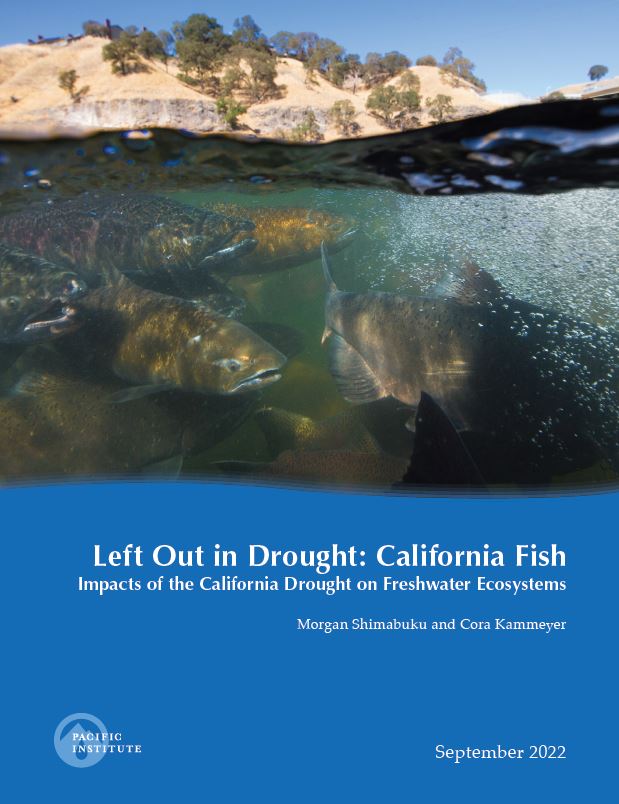Left Out in Drought: California Fish

Left Out in Drought: California Fish
Overview
The report, “Left Out in Drought: California Fish,” finds warmer water temperatures, increasing algal blooms, and lower stream flows associated with the 2020-present drought have exacerbated the long-term decline of California’s fish populations and threatened the continued survival of some native fish species, many of which face extinction. Fish population health is recognized as a major indicator of freshwater ecosystem health more broadly.
The report synthesizes and summarizes US Geological Survey (USGS) flow data, state and federal fish counts, reports from state and federal agencies, and peer-reviewed literature. While the report focuses on data from the Sacramento River, San Joaquin River, and San Francisco Bay-Delta, the findings illuminate broader trends for drought-related impacts to fish and freshwater ecosystems across California and beyond.
Key Findings
Key findings include:
-
- Water temperatures in the Sacramento and San Joaquin rivers exceeded the lethal limit for salmon during multiple months in 2020 and 2021, decreasing fish survival rates. For example, the egg-to-fry survival rate for endangered Sacramento River winter-run Chinook salmon reached a historic low of 2.6% in 2021, largely due to high water temperatures. During the same year, in addition to experiencing historically high water temperatures, river flows reached an 11-year low of 6.4 million acre-feet.
- San Francisco Bay-Delta ecosystem conditions have worsened as the drought has progressed. Due to stagnant water, high water temperatures, and high nutrient levels, harmful algal blooms in the Bay-Delta were nearly twice as extensive in 2021 as they were in 2020, reducing oxygen levels and threatening fish.
- During droughts, smaller side streams and lakes are particularly vulnerable to loss of runoff from low rain and snowmelt. In some places, native fish species have adapted to these specific aquatic habitats, increasing their risk of extinction if these waterways don’t have enough flow. For example, the Lost River sucker and shortnose sucker, both federally listed endangered species, have native habitat in Tule Lake, a National Wildlife Refuge in northern California. In 2022, these fish had to be hand caught and transported to nearby holding ponds to survive, as the lake completely dried up over the summer.

